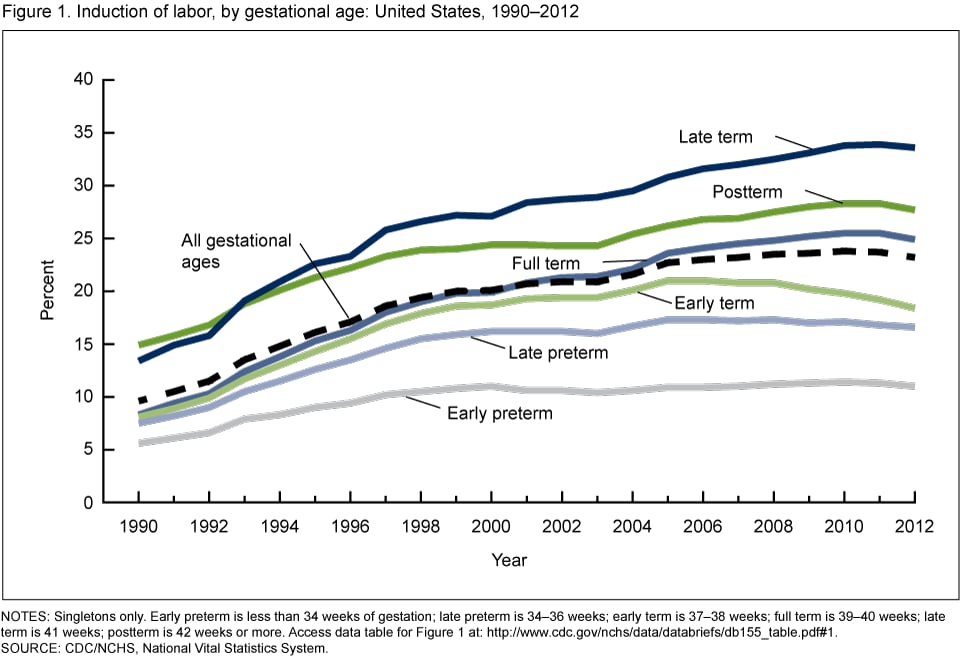Recent Declines in Induction of Labor by Gestational Age
Posted on byDuring the 1980s, 1990s, and through 2006, the length of pregnancies in the United States shortened. From 1981 through 2006, the proportion of infants born at less than 39 completed weeks of gestation increased nearly 60%, while births at 39 weeks or more declined more than 20%. This shift in the gestational age distribution has been associated with greater use of cesarean delivery and induction of labor prior to full term. In more recent years, however, the trend towards shorter gestational ages has partially reversed. Since 2006, births delivered at less than 39 weeks have declined (down 12%), and births at 39 weeks or more have increased (up 9%).
A new NCHS report explores trends in induction of labor for singleton births by gestational age, maternal age, race and Hispanic origin, and state for 2006–2012.
Key Findings from the Report:
- After nearly 20 years of consecutive increases, induction of labor for singleton births reached a high of 23.8% in 2010, then declined in 2011 (23.7%) and 2012 (23.3%).
- Trends in induction rates vary by gestational age, with rates for most gestational age groups declining since 2010. Induction rates for births at 36, 37, and 38 weeks have declined since 2006, with the largest decrease at 38 weeks.
- From 2006 through 2012, induction rates at 38 weeks of gestation declined for all maternal age groups under 40 and for each of the largest race and Hispanic origin groups.
- Induction rates at 38 weeks declined for 36 states and the District of Columbia (DC) from 2006 through 2012, with declines ranging from 5% to 48%; rates for 31 states and DC declined at least 10%.
Posted on by


